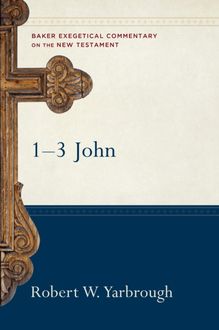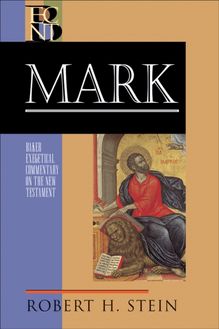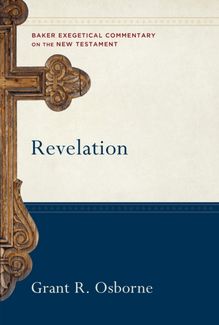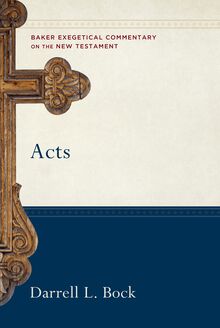Jude and 2 Peter (Baker Exegetical Commentary on the New Testament) , livre ebook
474
pages
English
Ebooks
2008
Vous pourrez modifier la taille du texte de cet ouvrage
Obtenez un accès à la bibliothèque pour le consulter en ligne En savoir plus
Découvre YouScribe en t'inscrivant gratuitement
Découvre YouScribe en t'inscrivant gratuitement
474
pages
English
Ebooks
2008
Vous pourrez modifier la taille du texte de cet ouvrage
Obtenez un accès à la bibliothèque pour le consulter en ligne En savoir plus
Publié par
Date de parution
01 novembre 2008
Nombre de lectures
0
EAN13
9781441210722
Langue
English
Poids de l'ouvrage
3 Mo
Publié par
Date de parution
01 novembre 2008
Nombre de lectures
0
EAN13
9781441210722
Langue
English
Poids de l'ouvrage
3 Mo
Series Page
BAKER EXEGETICAL COMMENTARY ON THE NEW TESTAMENT
ROBERT W. YARBROUGH and JOSHUA W. JIPP, EDITORS
Volumes now available:
Matthew David L. Turner
Mark Robert H. Stein
Luke Darrell L. Bock
Acts Darrell L. Bock
Romans, 2nd ed. Thomas R. Schreiner
1 Corinthians David E. Garland
2 Corinthians George H. Guthrie
Galatians Douglas J. Moo
Ephesians Frank Thielman
Philippians Moisés Silva
Colossians and Philemon G. K. Beale
1–2 Thessalonians Jeffrey A. D. Weima
James Dan G. McCartney
1 Peter Karen H. Jobes
1–3 John Robert W. Yarbrough
Jude and 2 Peter Gene L. Green
Revelation Grant R. Osborne
***
Gene L. Green (PhD, University of Aberdeen) is dean of Trinity International University in Miami, Florida. He previously taught New Testament at Wheaton College and at the Seminario ESEPA in Costa Rica. In addition to writing numerous articles, he is the author of commentaries on 1 and 2 Thessalonians and 1 Peter and coauthor of The New Testament in Antiquity .
© 2008 by Gene L. Green
Published by Baker Academic a division of Baker Publishing Group P.O. Box 6287, Grand Rapids, MI 49516-6287 www.bakeracademic.com
Ebook edition created 2013
Ebook corrections 10.25.2018, 03.23.2022
All rights reserved. No part of this publication may be reproduced, stored in a retrieval system, or transmitted in any form or by any means—for example, electronic, photocopy, recording—without the prior written permission of the publisher. The only exception is brief quotations in printed reviews.
Library of Congress Cataloging-in-Publication Data is on file at the Library of Congress, Washington, DC.
ISBN 978-1-4412-1072-2
Baker Publishing Group publications use paper produced from sustainable forestry practices and post-consumer waste whenever possible.
In memoriam
Rachel Griego (†2005)
Faithful student of Scripture
Contents
Cover
Series Page
Title Page
Copyright Page
Dedication
Series Preface
Author’s Preface
Abbreviations
Transliteration
Map
Introduction to Jude
I. Epistolary Greeting (1–2)
II. Letter Body: An Exhortation to Contend for the Faith (3–23)
A. Disclosure of Jude’s Purpose for Writing: An Exhortation to the Beloved (3–4)
B. A Call to Remember: Predictions about the Heretics and Fulfillment (5–19)
C. Exhortations to the Beloved (20–23)
III. Closing Doxology (24–25)
Introduction to 2 Peter
I. Epistolary Greeting (1:1–2)
II. Letter Body: A Warning against False Teachers (1:3–3:18a)
A. Body Opening: God’s Call to Glory and Virtue (1:3–11)
B. Body Middle: The Apostolic Testimony and the False Teachers (1:12–2:22)
C. Body Closing: A Call to Holiness (3:1–18a)
III. Letter Closing: A Doxology (3:18b)
Works Cited
Index of Subjects
Index of Authors
Index of Greek Words
Index of Scripture and Other Ancient Writings
Notes
Back Cover
Series Preface
The chief concern of the Baker Exegetical Commentary on the New Testament (BECNT) is to provide, within the framework of informed evangelical thought, commentaries that blend scholarly depth with readability, exegetical detail with sensitivity to the whole, and attention to critical problems with theological awareness. We hope thereby to attract the interest of a fairly wide audience, from the scholar who is looking for a thoughtful and independent examination of the text to the motivated lay Christian who craves a solid but accessible exposition.
Nevertheless, a major purpose is to address the needs of pastors and others involved in the preaching and exposition of the Scriptures as the uniquely inspired Word of God. This consideration directly affects the parameters of the series. For example, serious biblical expositors cannot afford to depend on a superficial treatment that avoids the difficult questions, but neither are they interested in encyclopedic commentaries that seek to cover every conceivable issue that may arise. Our aim, therefore, is to focus on those problems that have a direct bearing on the meaning of the text (although selected technical details are treated in the additional notes).
Similarly, a special effort is made to avoid treating exegetical questions for their own sake, that is, in relative isolation from the thrust of the argument as a whole. This effort may involve (at the discretion of the individual contributors) abandoning the verse-by-verse approach in favor of an exposition that focuses on the paragraph as the main unit of thought. In all cases, however, the commentaries will stress the development of the argument and explicitly relate each passage to what precedes and follows it so as to identify its function in context as clearly as possible.
We believe, moreover, that a responsible exegetical commentary must take fully into account the latest scholarly research, regardless of its source. The attempt to do this in the context of a conservative theological tradition presents certain challenges, and in the past the results have not always been commendable. In some cases, evangelicals appear to make use of critical scholarship not for the purpose of genuine interaction but only to dismiss it. In other cases, the interaction glides over into assimilation, theological distinctives are ignored or suppressed, and the end product cannot be differentiated from works that arise from a fundamentally different starting point.
The contributors to this series attempt to avoid these pitfalls. On the one hand, they do not consider traditional opinions to be sacrosanct, and they are certainly committed to do justice to the biblical text whether or not it supports such opinions. On the other hand, they will not quickly abandon a long-standing view, if there is persuasive evidence in its favor, for the sake of fashionable theories. What is more important, the contributors share a belief in the trustworthiness and essential unity of Scripture. They also consider that the historic formulations of Christian doctrine, such as the ecumenical creeds and many of the documents originating in the sixteenth-century Reformation, arose from a legitimate reading of Scripture, thus providing a proper framework for its further interpretation. No doubt, the use of such a starting point sometimes results in the imposition of a foreign construct on the text, but we deny that it must necessarily do so or that the writers who claim to approach the text without prejudices are invulnerable to the same danger.
Accordingly, we do not consider theological assumptions—from which, in any case, no commentator is free—to be obstacles to biblical interpretation. On the contrary, an exegete who hopes to understand the apostle Paul in a theological vacuum might just as easily try to interpret Aristotle without regard for the philosophical framework of his whole work or without having recourse to those subsequent philosophical categories that make possible a meaningful contextualization of his thought. It must be emphasized, however, that the contributors to the present series come from a variety of theological traditions and that they do not all have identical views with regard to the proper implementation of these general principles. In the end, all that really matters is whether the series succeeds in representing the original text accurately, clearly, and meaningfully to the contemporary reader.
Shading has been used to assist the reader in locating the introductory comments for each section. Textual variants in the Greek text are signaled in the author’s translation by means of half-brackets around the relevant word or phrase (e.g., ⌜ Gerasenes ⌝ ), thereby alerting the reader to turn to the additional notes at the end of each exegetical unit for a discussion of the textual problem. The documentation uses the author-date method, in which the basic reference consists of author’s surname + year + page number(s): Fitzmyer 1992: 58. The only exceptions to this system are well-known reference works (e.g., BDAG, LSJ, TDNT ). Full publication data and a complete set of indexes can be found at the end of the volume.
Robert Yarbrough
Robert H. Stein
Author’s Preface
The Baker Exegetical Commentary on the New Testament is a series designed to engage scholars as well as pastors and others who preach and exposit Scripture. It also invites lay Christians to join in the discussion about the books of the New Testament. Given these goals, writing on Jude and 2 Peter is a daunting task indeed. Among scholars, Jude and 2 Peter have lived on the margins. The critical issues of authorship, audience and environment swirl around any academic discussion of these letters. Jude has been tagged the “Most Neglected” of New Testament books (Rowston 1975). Jack Elliott once called 1 Peter an “Exegetical Stepchild” (J. H. Elliott 1976), leaving us wondering about the family status of 2 Peter. A colleague once commented that these epistles are hardly in the center of the canon. The situation in the church has not been much better. We often hear Jude’s doxology (vv. 24–25), and appeals are made to 2 Peter 1:21 in discussions about inspiration. But few sermons locate their foundations in these books and church curricula rarely include discussion of them. Lay Christians may know something about how Jude and 2 Peter are related, but few take them up as texts for a Bible study or reading. These epistles are difficult to interpret and present unique challenges, such as Jude’s quotation of 1 Enoch and the predominance of severe language about judgment throughout.
Yet interest in these books is on the rise, and their study is experiencing a revival. A number of commentaries have been published since Bauckham’s monumental work (Bauckham 1983), 1 and more are currently in production. At the Annual Meeting of the Society of Biblical Literature, a new consultation was formed called “Methodological Reassessments of the Letters of James, Peter, and Jude.” The 2007 meeting focused on 2 Peter and Jude. Moreover, these books by the “Jerus












